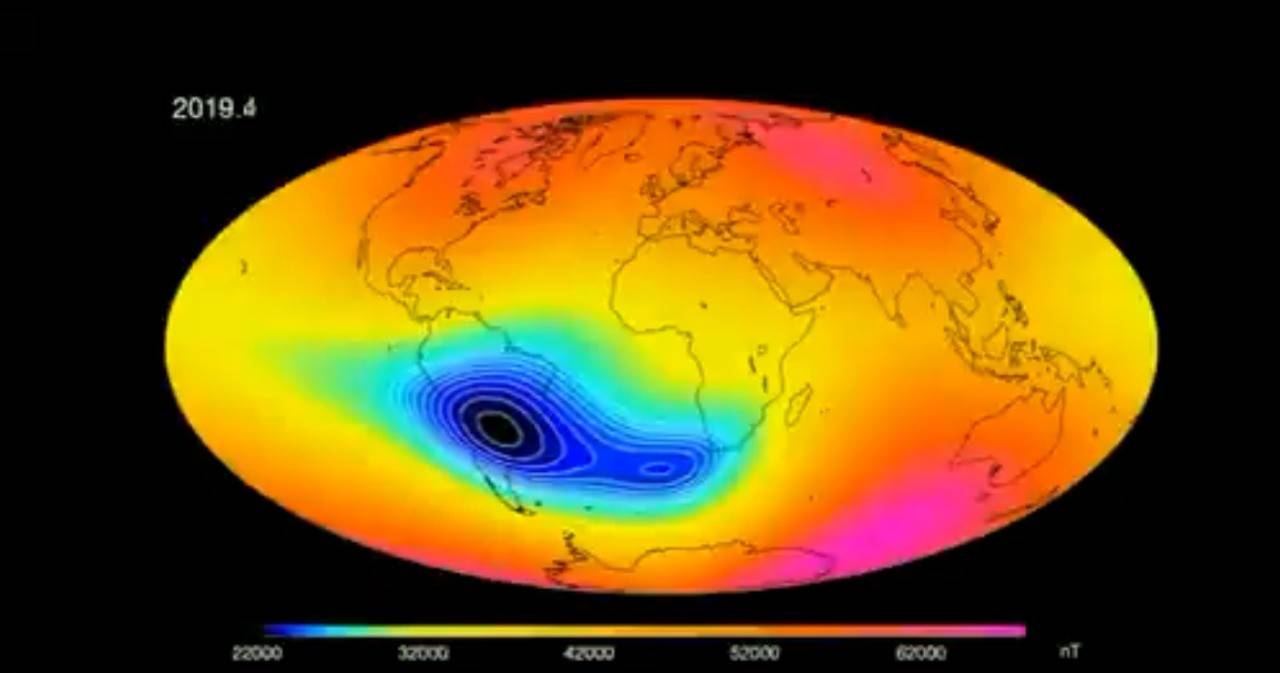RIO DE JANEIRO, BRAZIL – The Earth’s magnetic field is vital to life on our planet. It is a complex and dynamic force that protects us from cosmic radiation and charged particles from the Sun.
Without this protection, the Earth would be like Mars, arid and with high temperatures. The magnetic field is largely generated by an ocean of superheated, swirling liquid iron that makes up the outer core around 3000 km below the earth’s surface.
A region of reduced magnetic intensity has been detected between Africa and South America, which has attracted the attention of researchers. This anomaly is causing satellites and other objects launched by man from the earth to experience technical disturbances when they pass over this area.

This weakening could lead to a reversal of the poles – in which the north and south magnetic poles switch places – something that last occurred 780,000 years ago.
This has attracted the attention of scientists from the European Space Agency (ESA), who through the Swarm mission have collected data confirming both this magnetic anomaly and a new one.
In an area stretching from Africa to South America, Earth’s magnetic field is gradually weakening. Scientists are using data from @esa_swarm to improve our understanding of this area known as the ‘South Atlantic Anomaly’.
ESA has used magnetometers and electric field sensors, which are installed on board three identical satellites, to collect information which is analyzed by the Swarm Data, Innovation and Science Cluster (DISC), which has been studying the anomaly since late 2013.
Jürgen Matzka of the German Geoscience Research Centre explained that: “The new, eastern minimum of the South Atlantic Anomaly has appeared over the last decade and in recent years is developing vigorously”.
“We are very lucky to have the Swarm satellites in orbit to investigate the development of the South Atlantic Anomaly. The challenge now is to understand the processes in Earth’s core driving these changes,” Matzka said.
According to experts, the field has lost nine percent of its intensity over the past 200 years and there is now a major weakening between South America and Africa.
The group of researchers found that between 1970 and 2020, the minimum field strength in this area has dropped from around 24 000 nanoteslas to 22 000, while at the same time the area of the anomaly has grown and moved westward at a pace of around 20 km per year.
Despite these findings, the ESA has sent a message of reassurance that there is no cause for alarm about the consequences, as “the decrease in intensity in the South Atlantic that is now occurring is within what are considered normal levels of fluctuation”.
As for the theory that the poles are in the process of reversing, experts say this will happen over several thousand years and that it is unlikely that the field will disappear completely.
Currently, the only issue lies in the disturbance in satellites passing over the anomaly, considering that there is a greater flow of solar wind there than in other regions.

